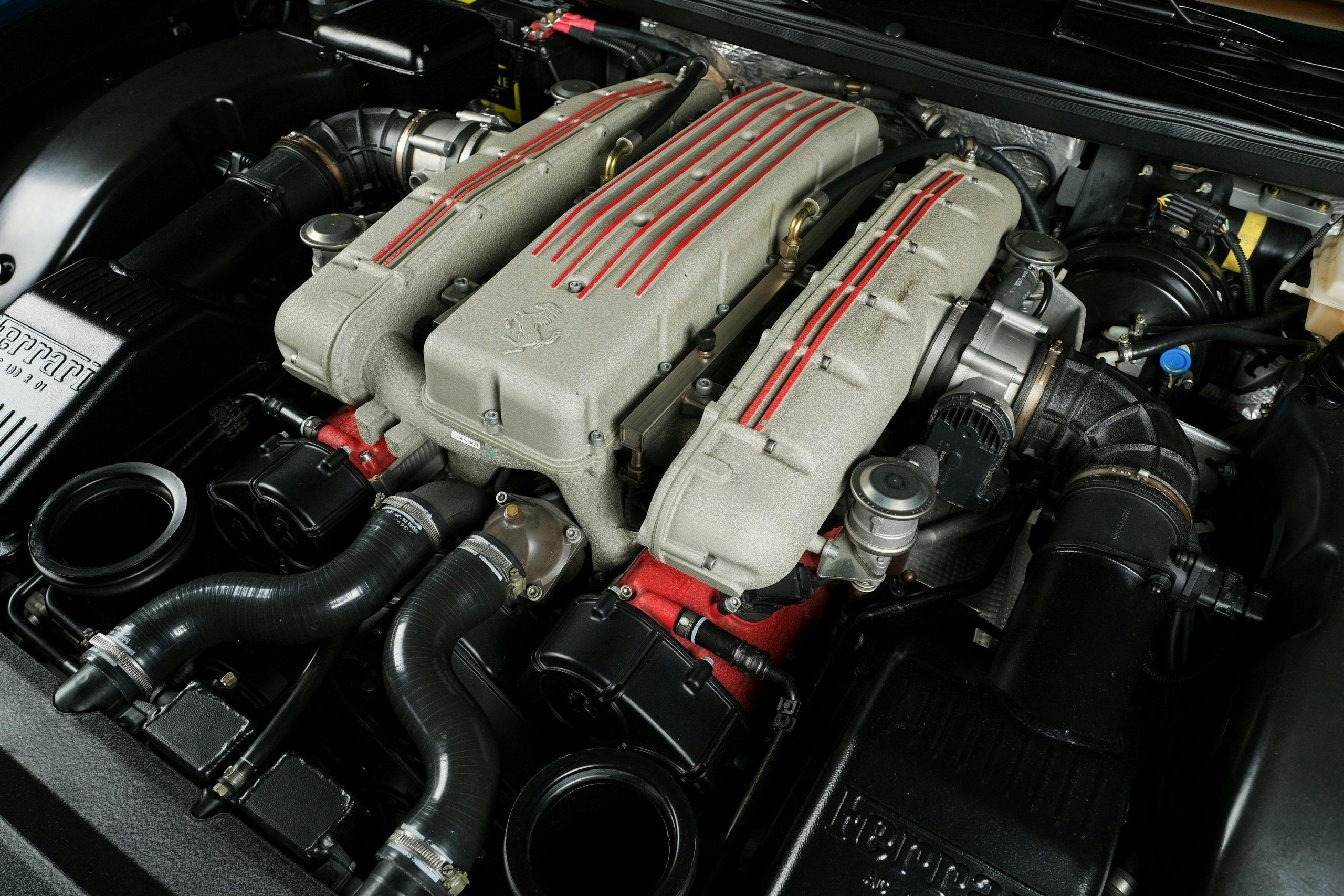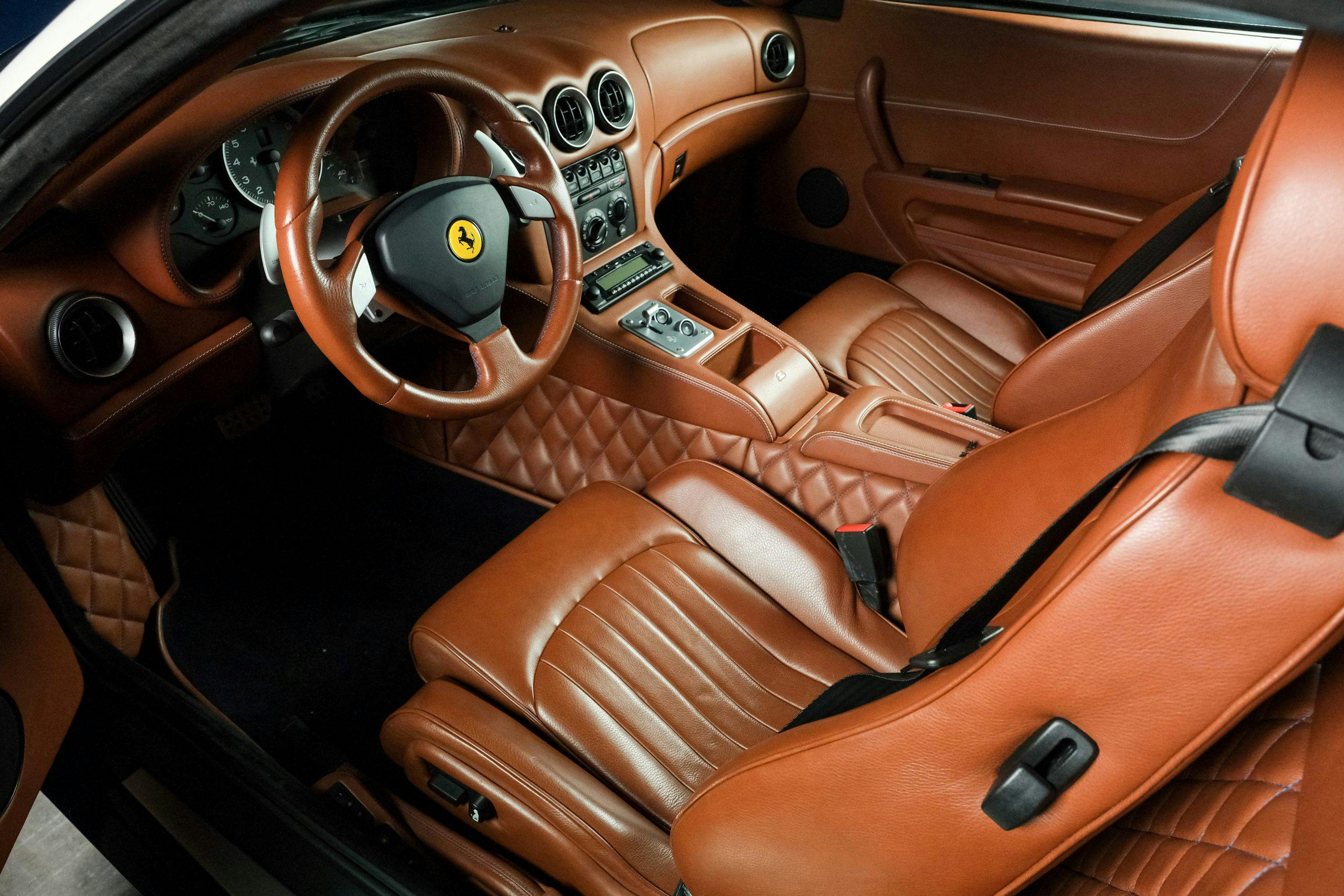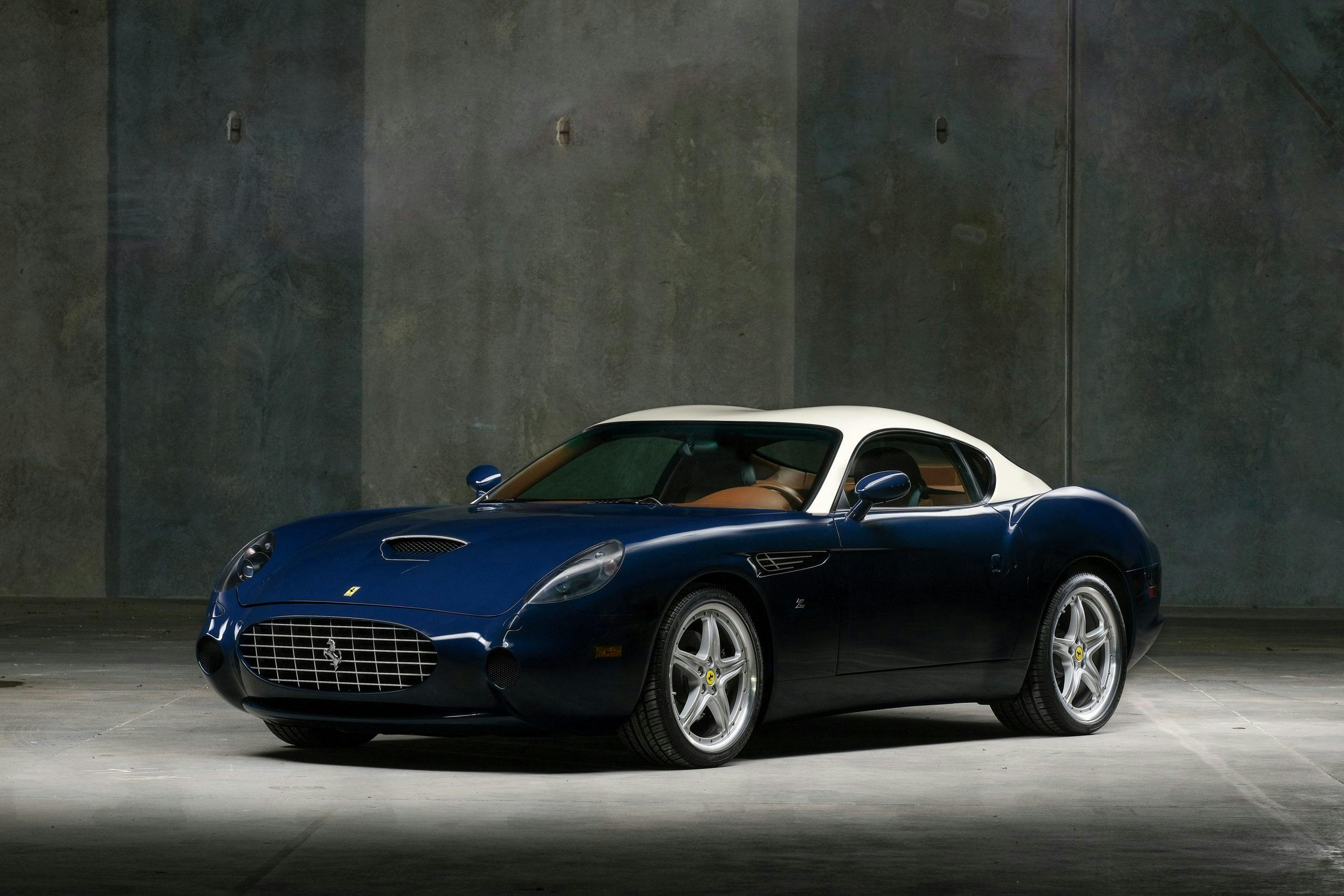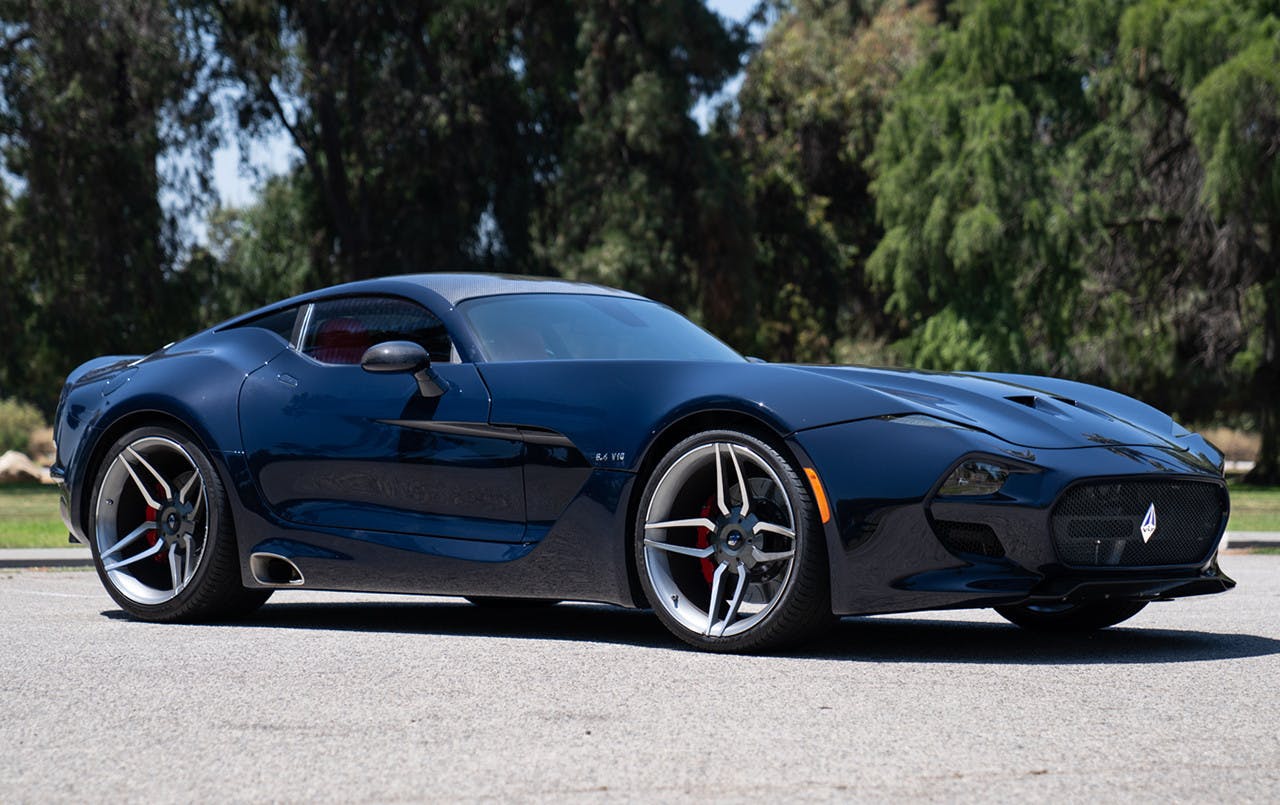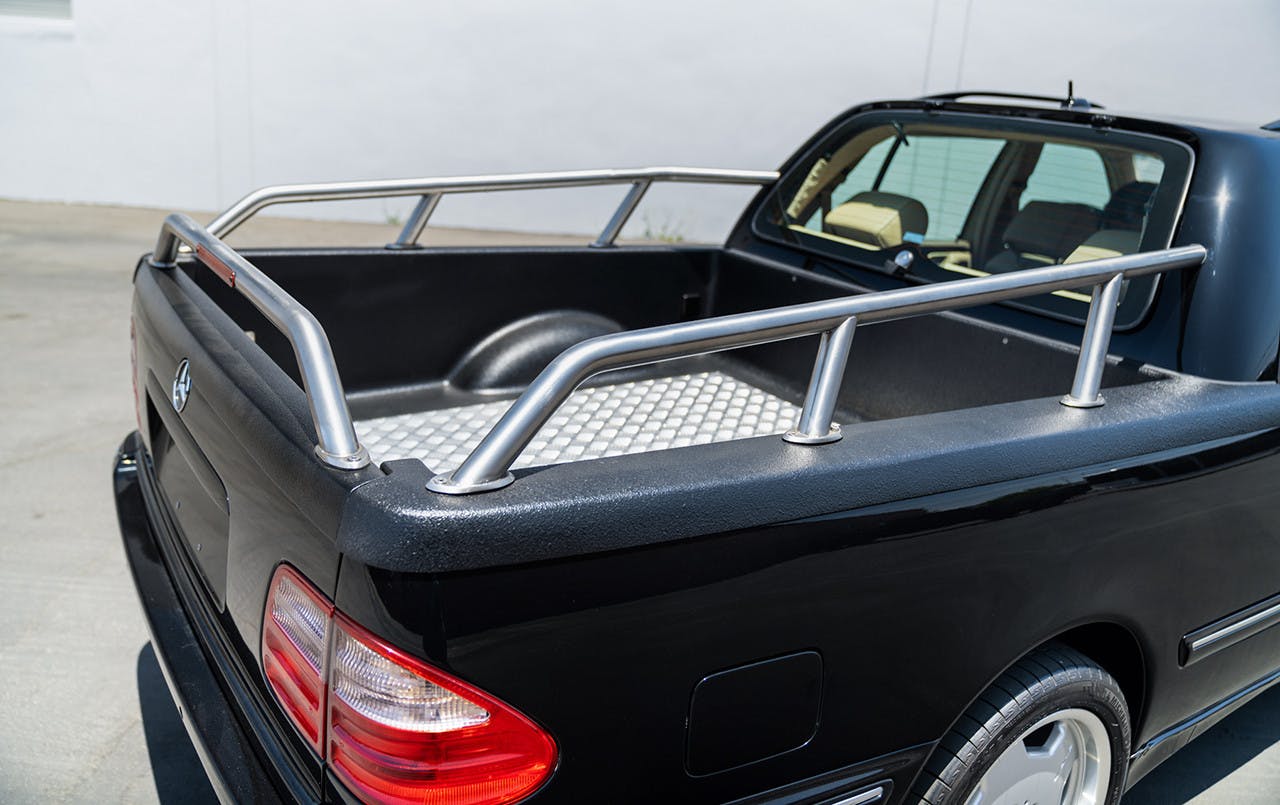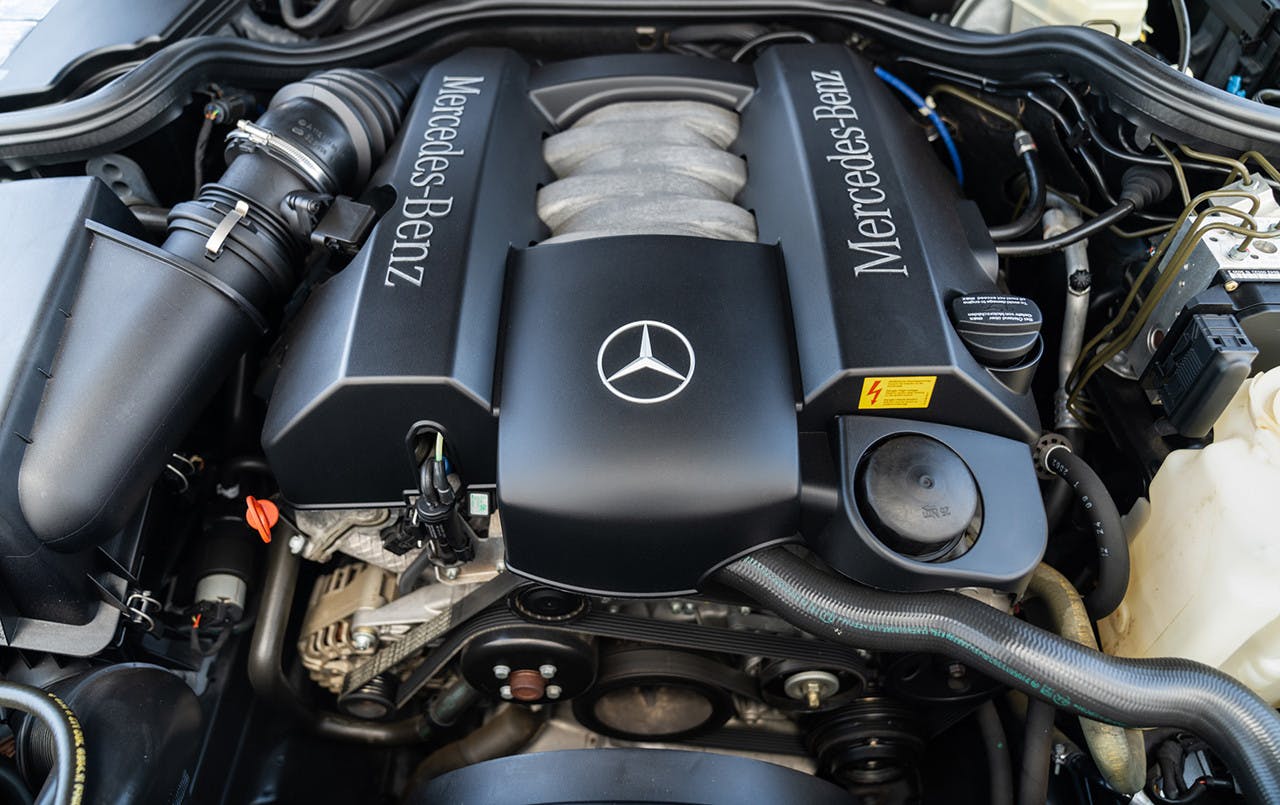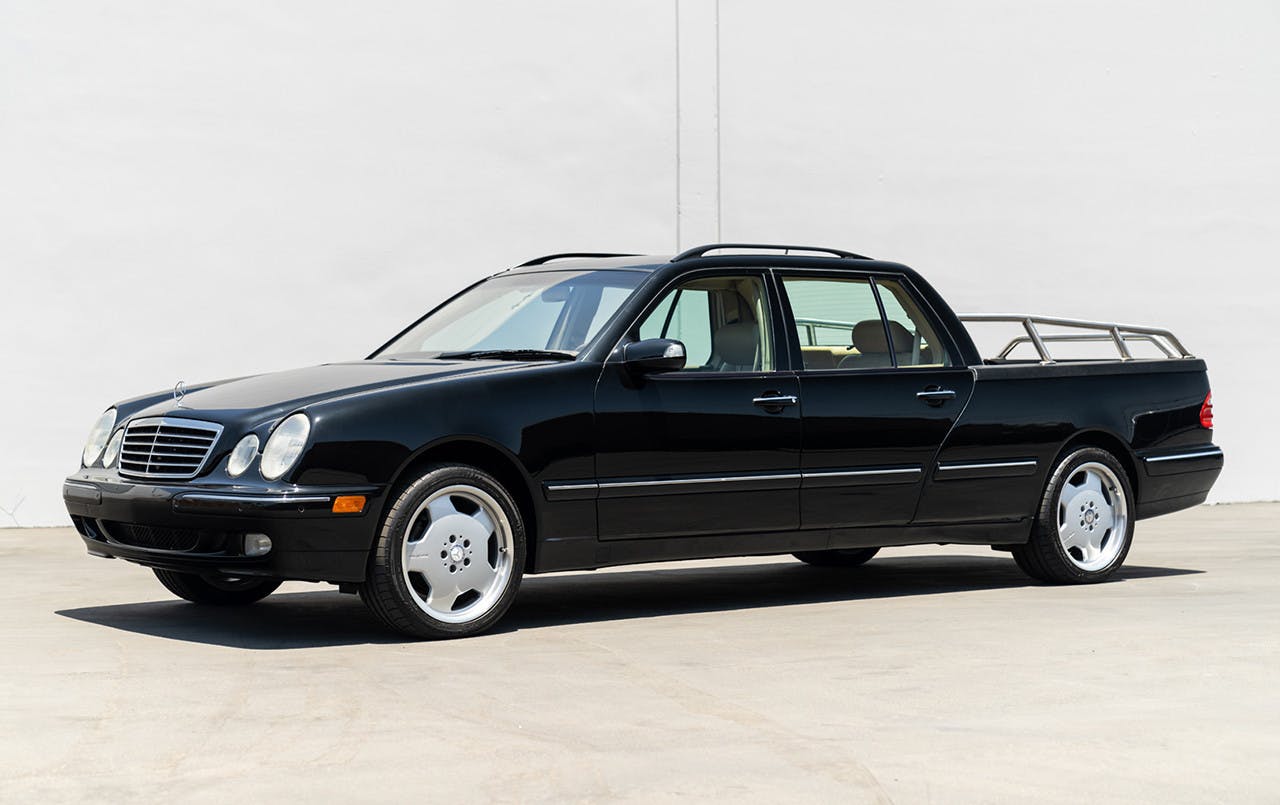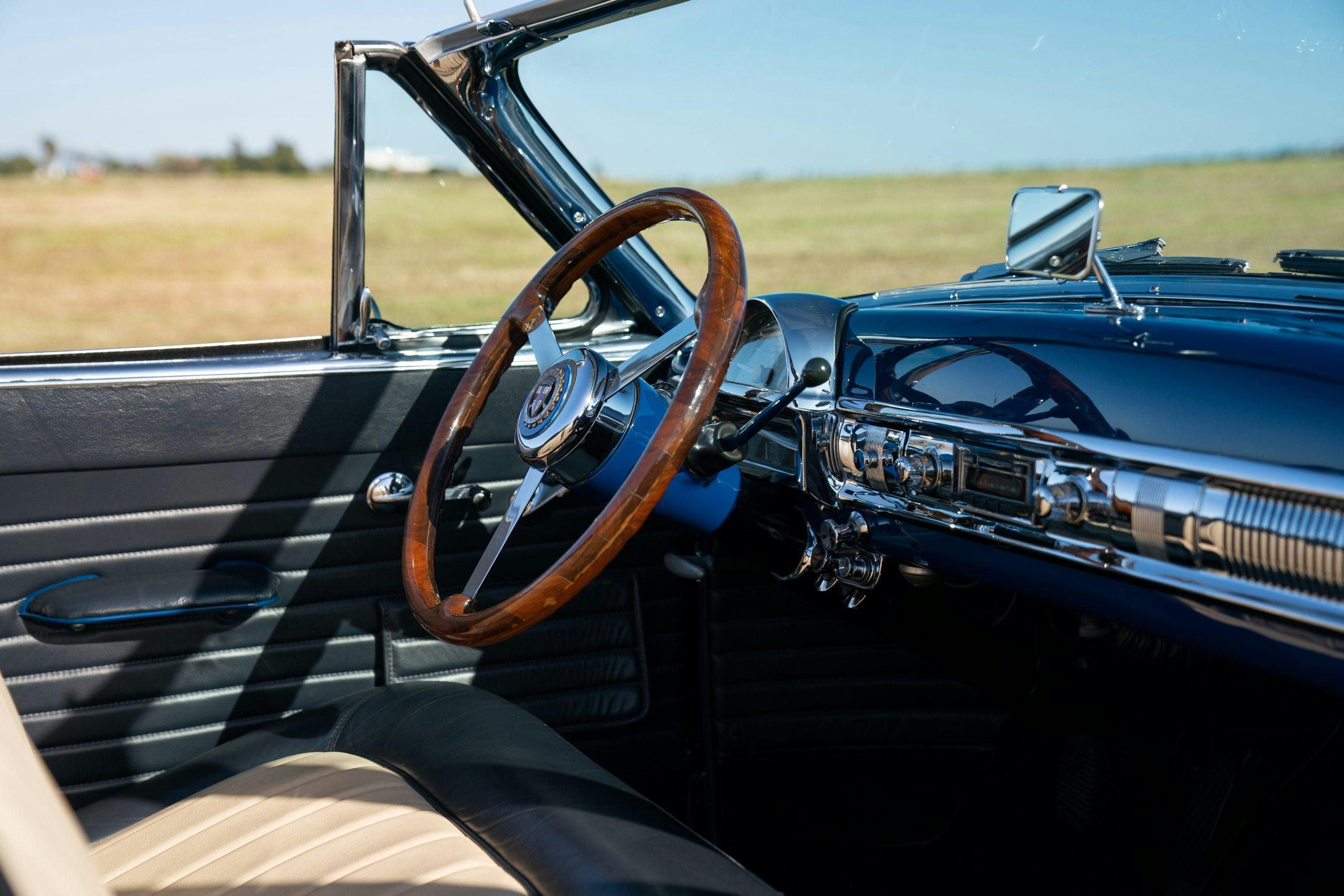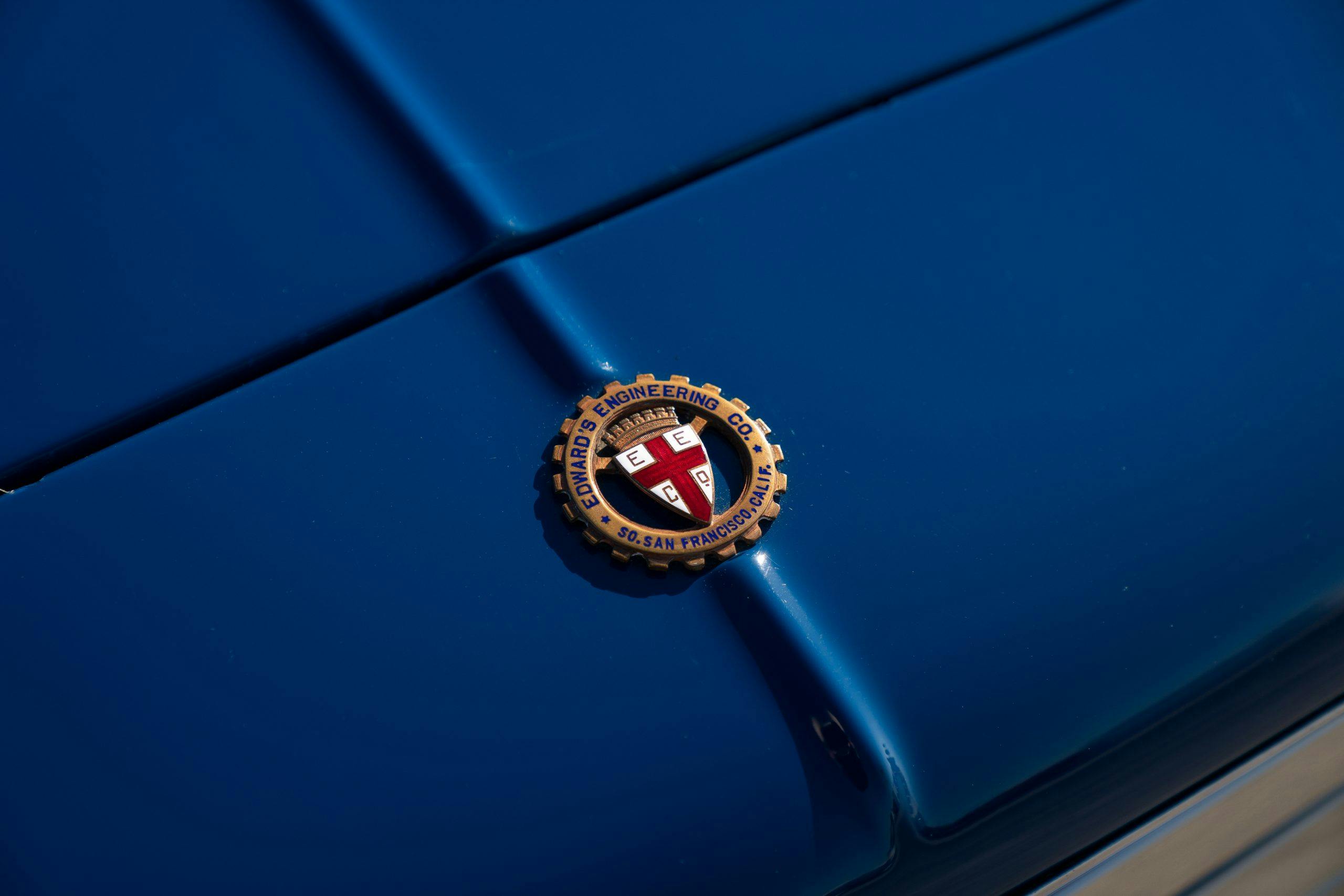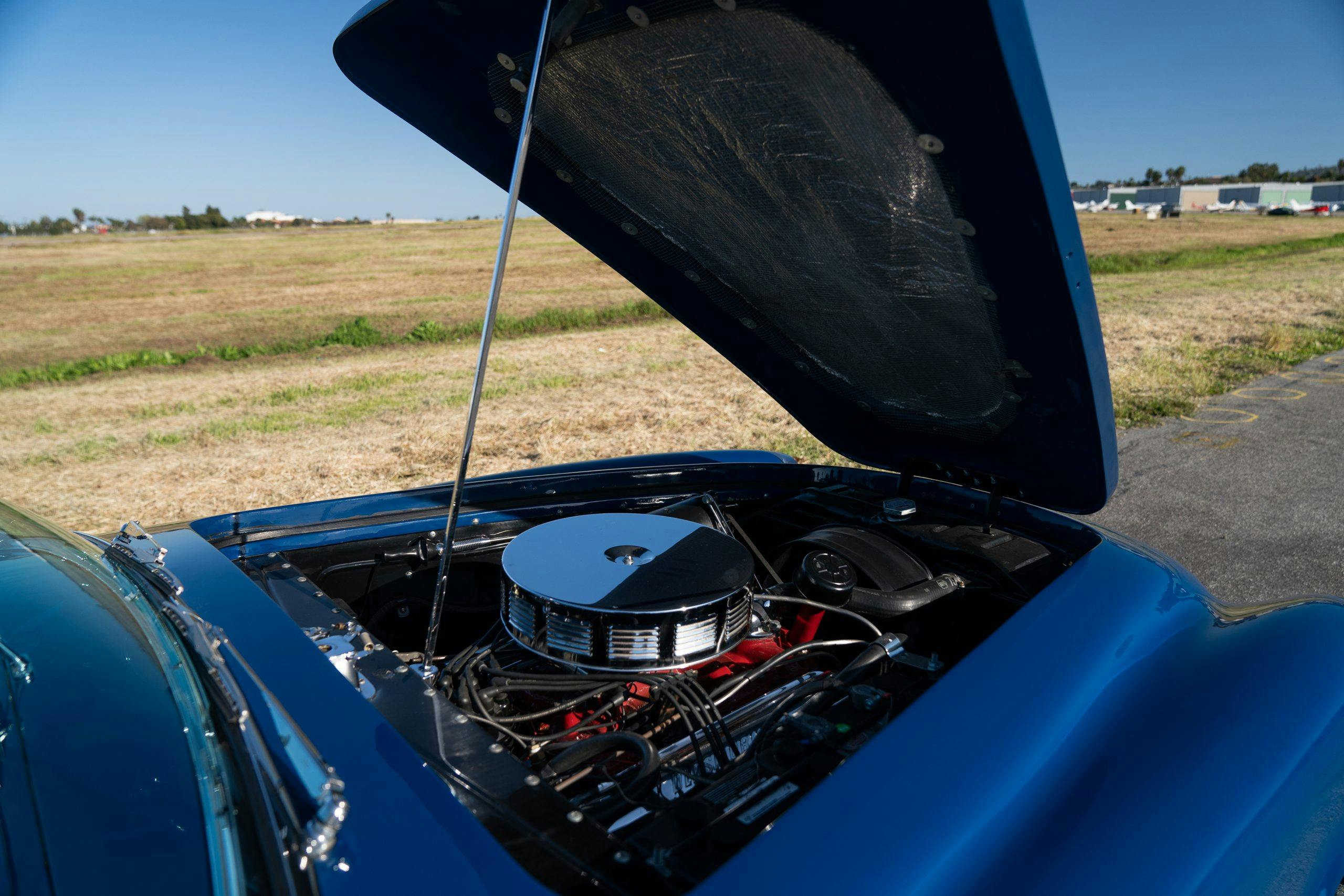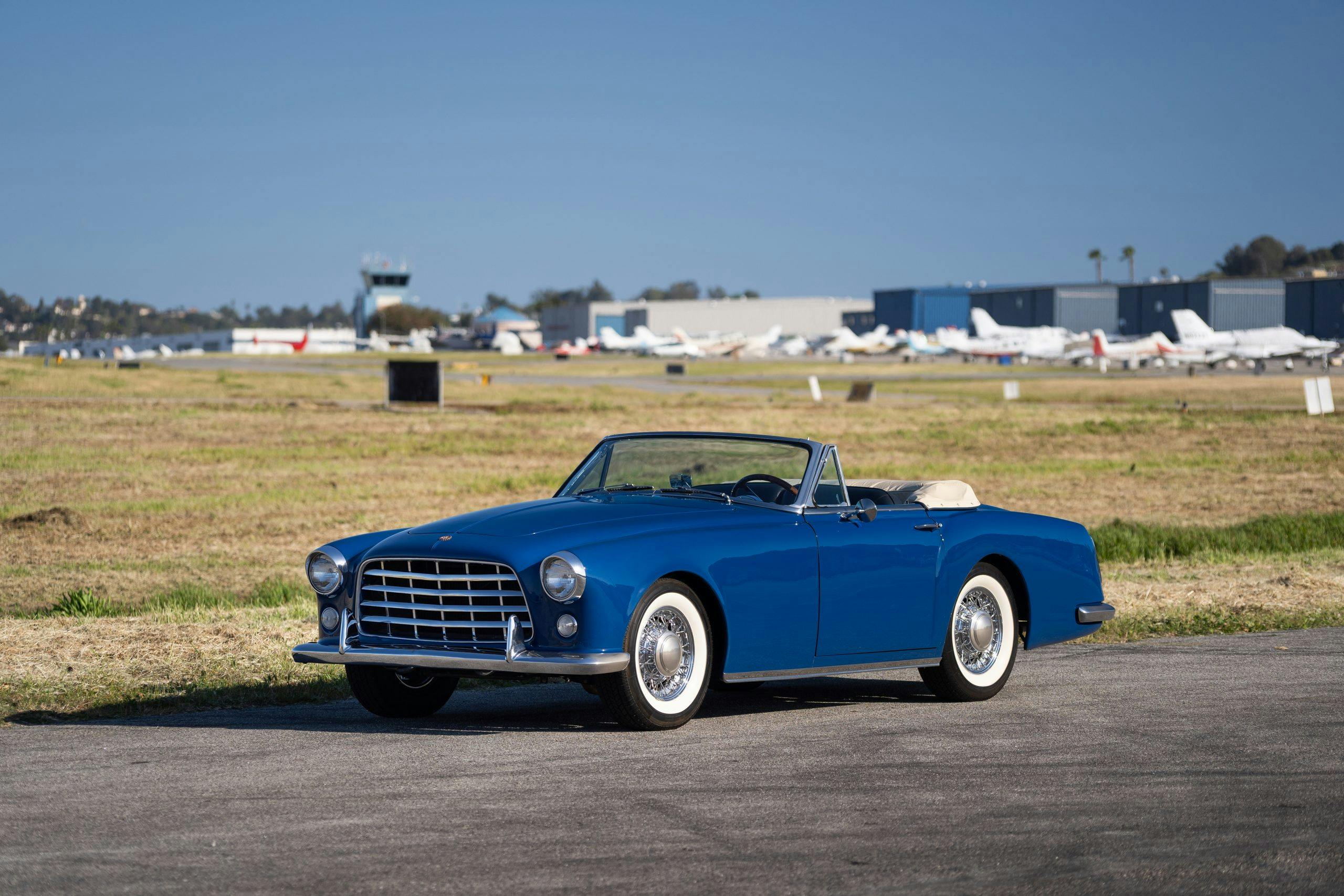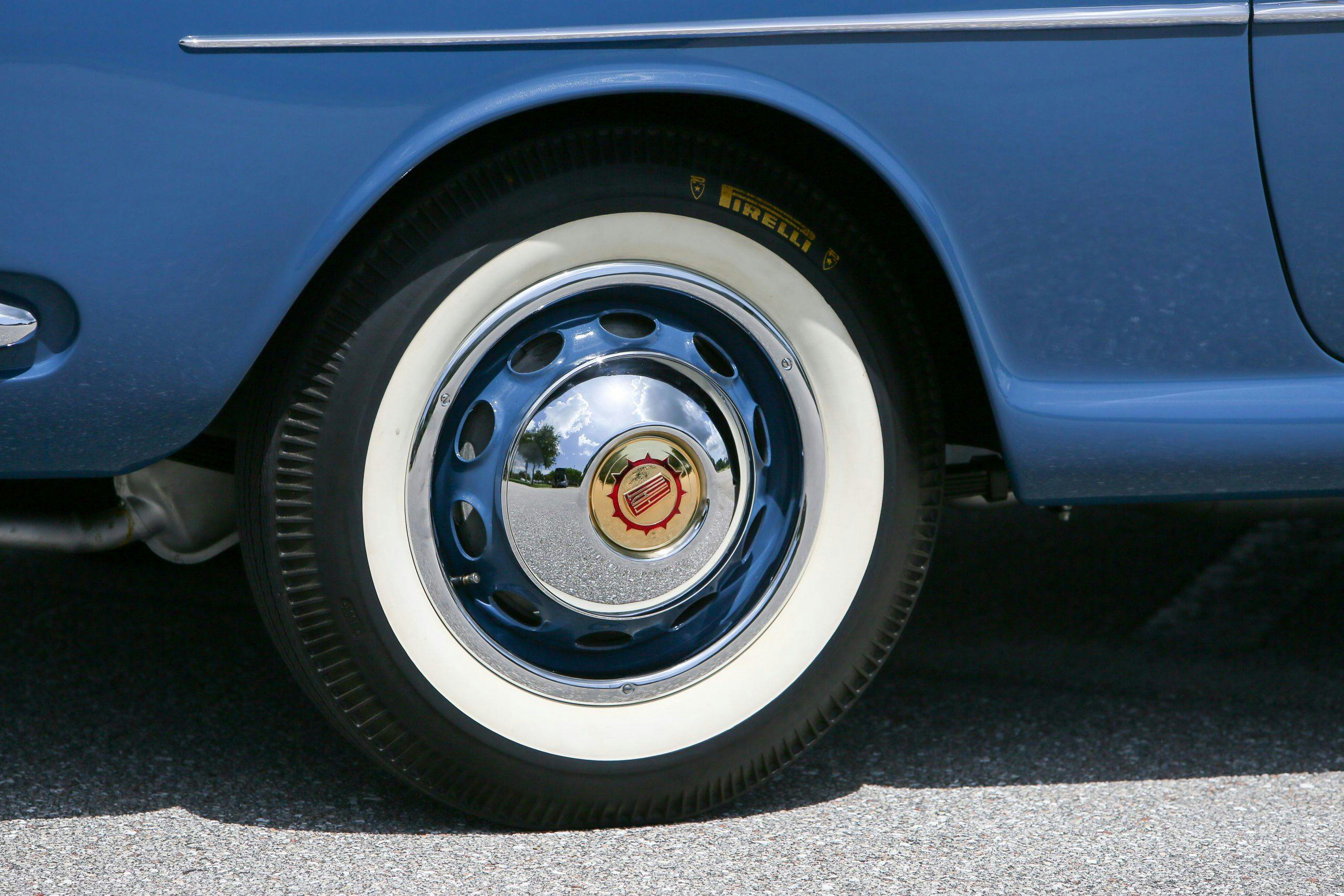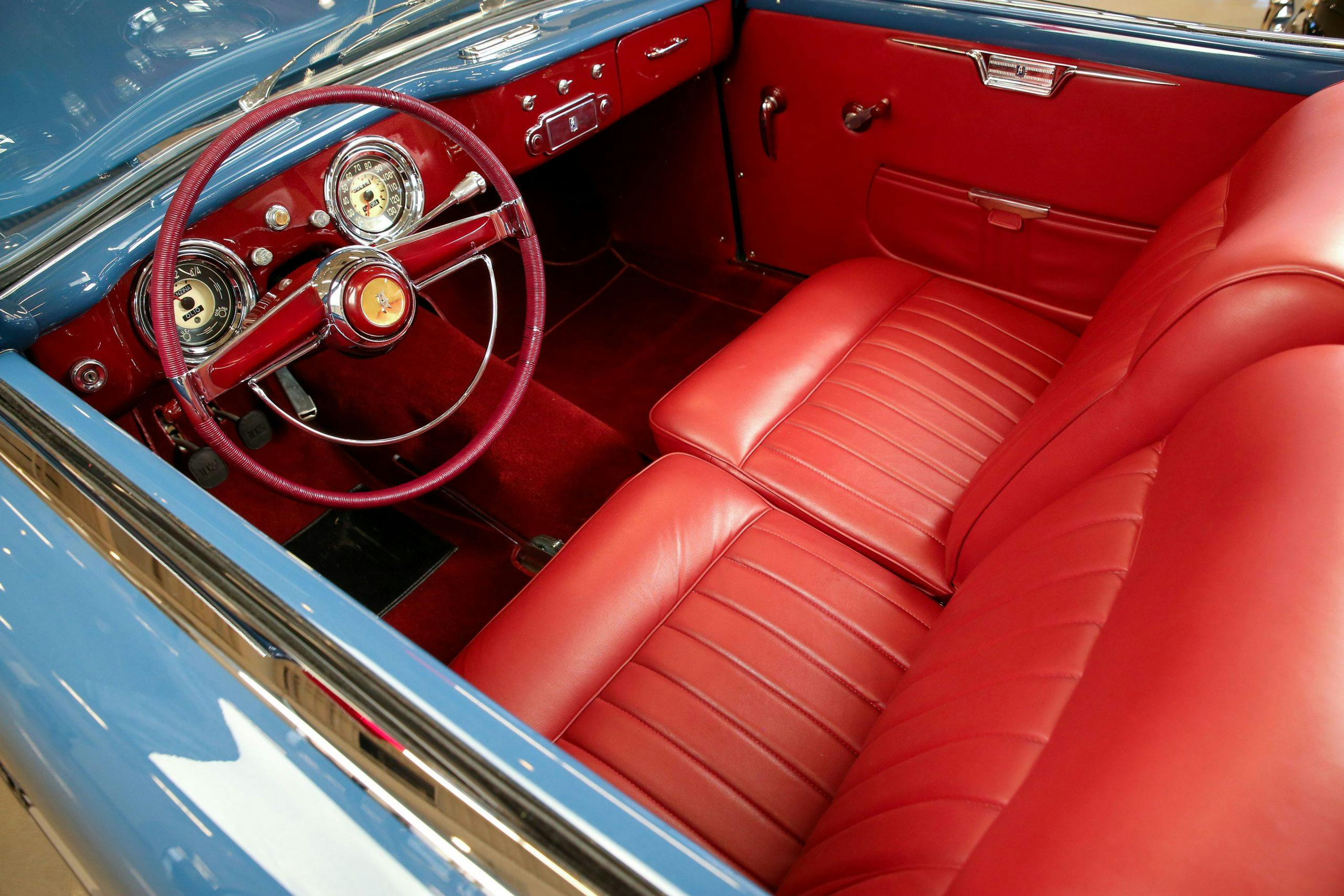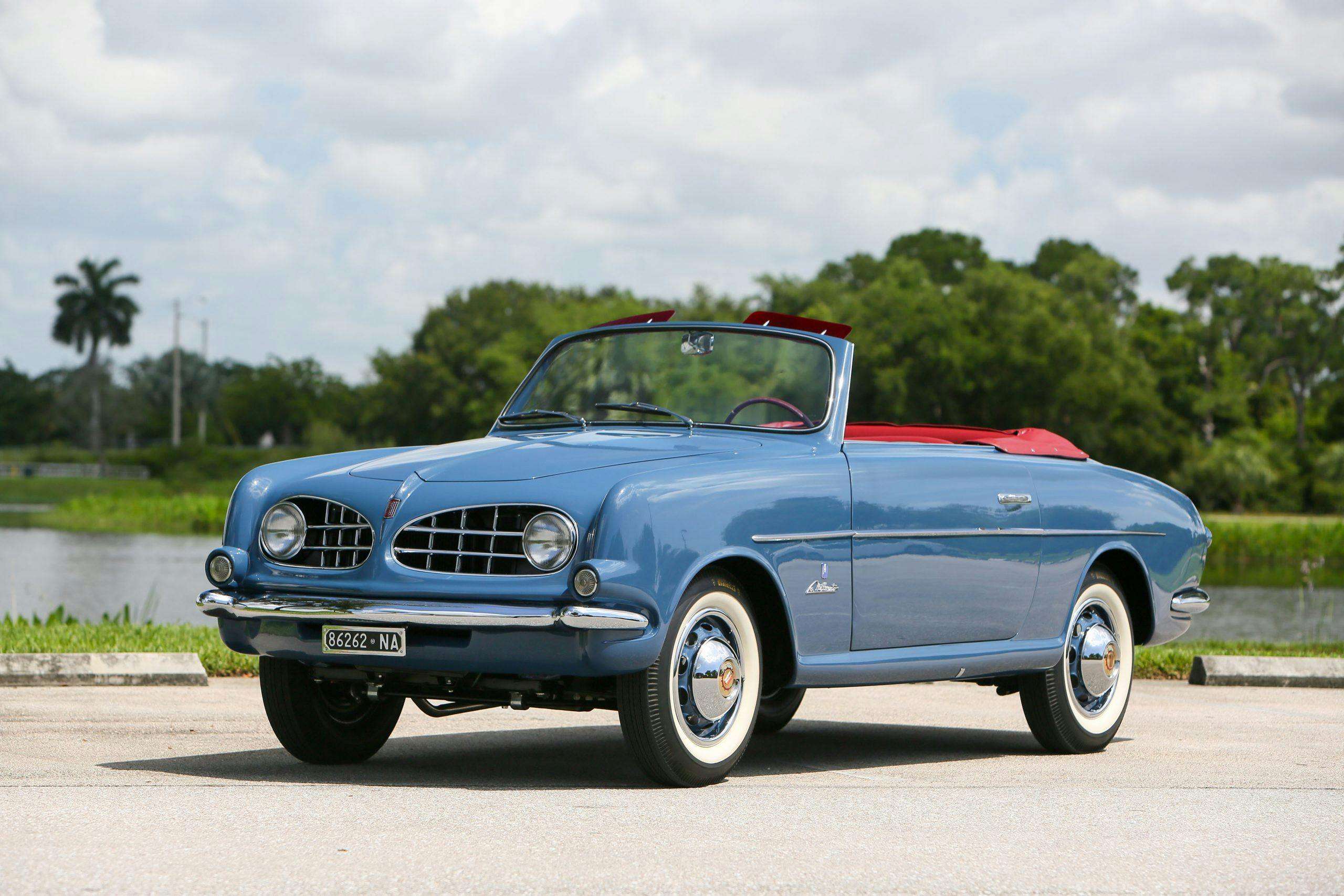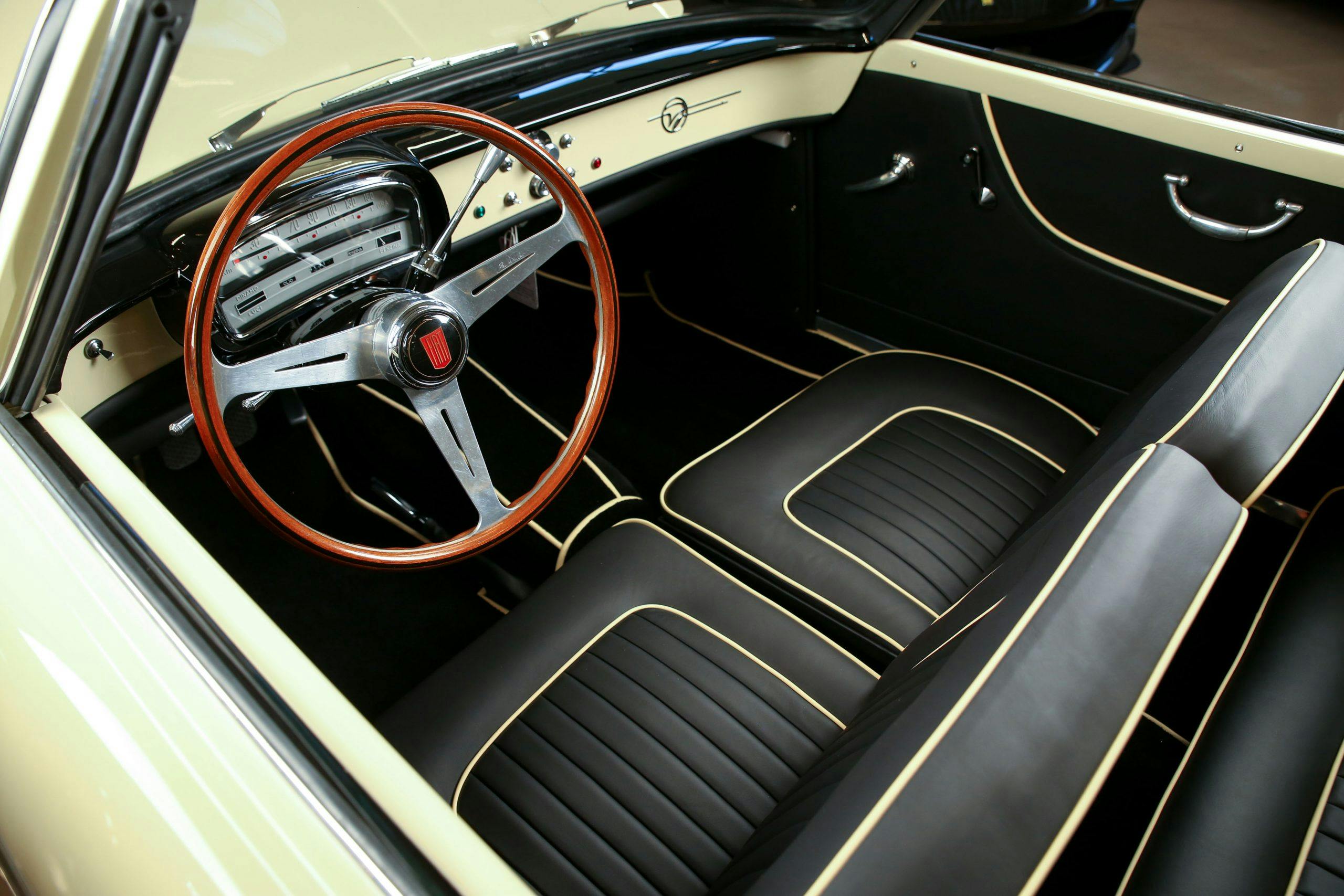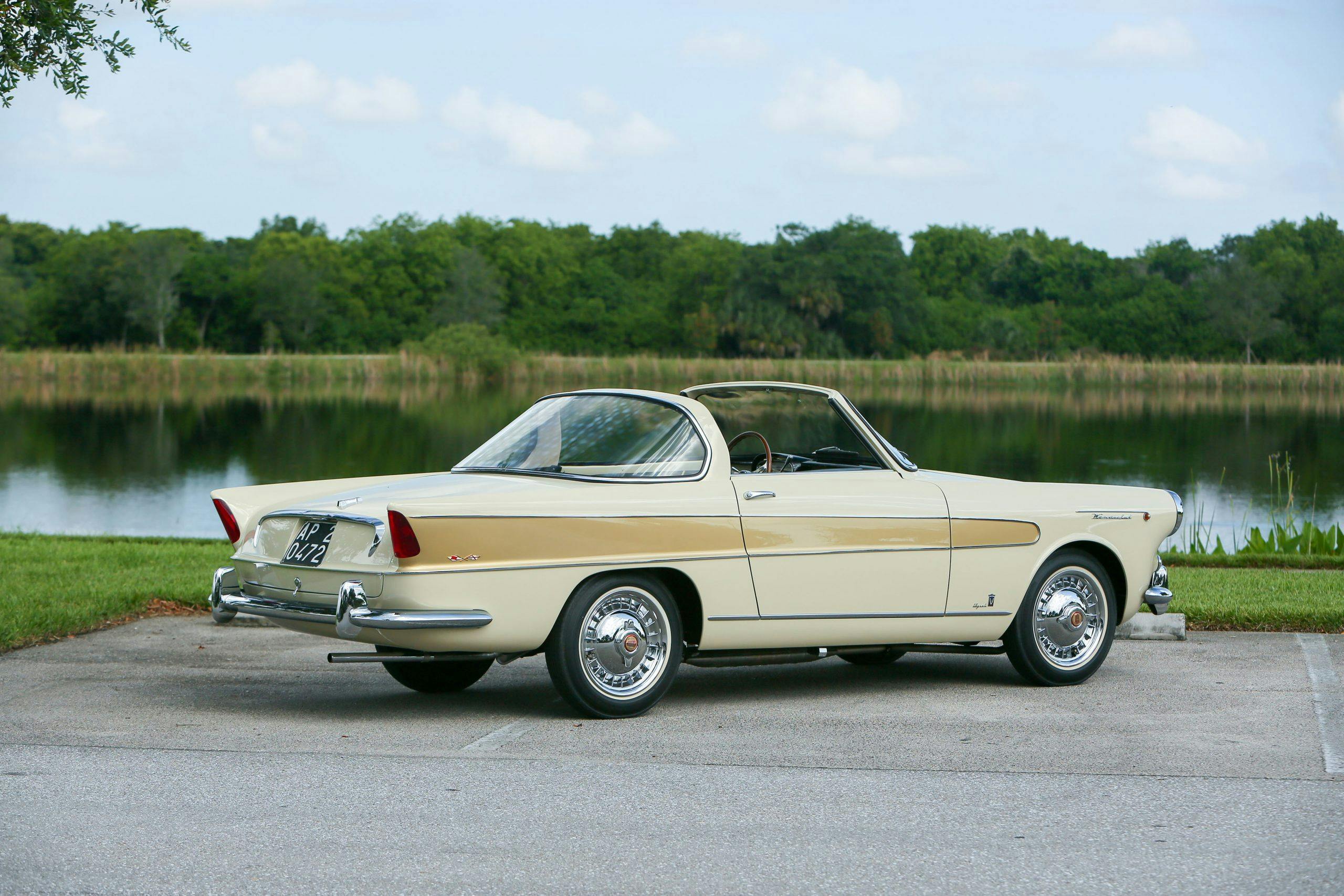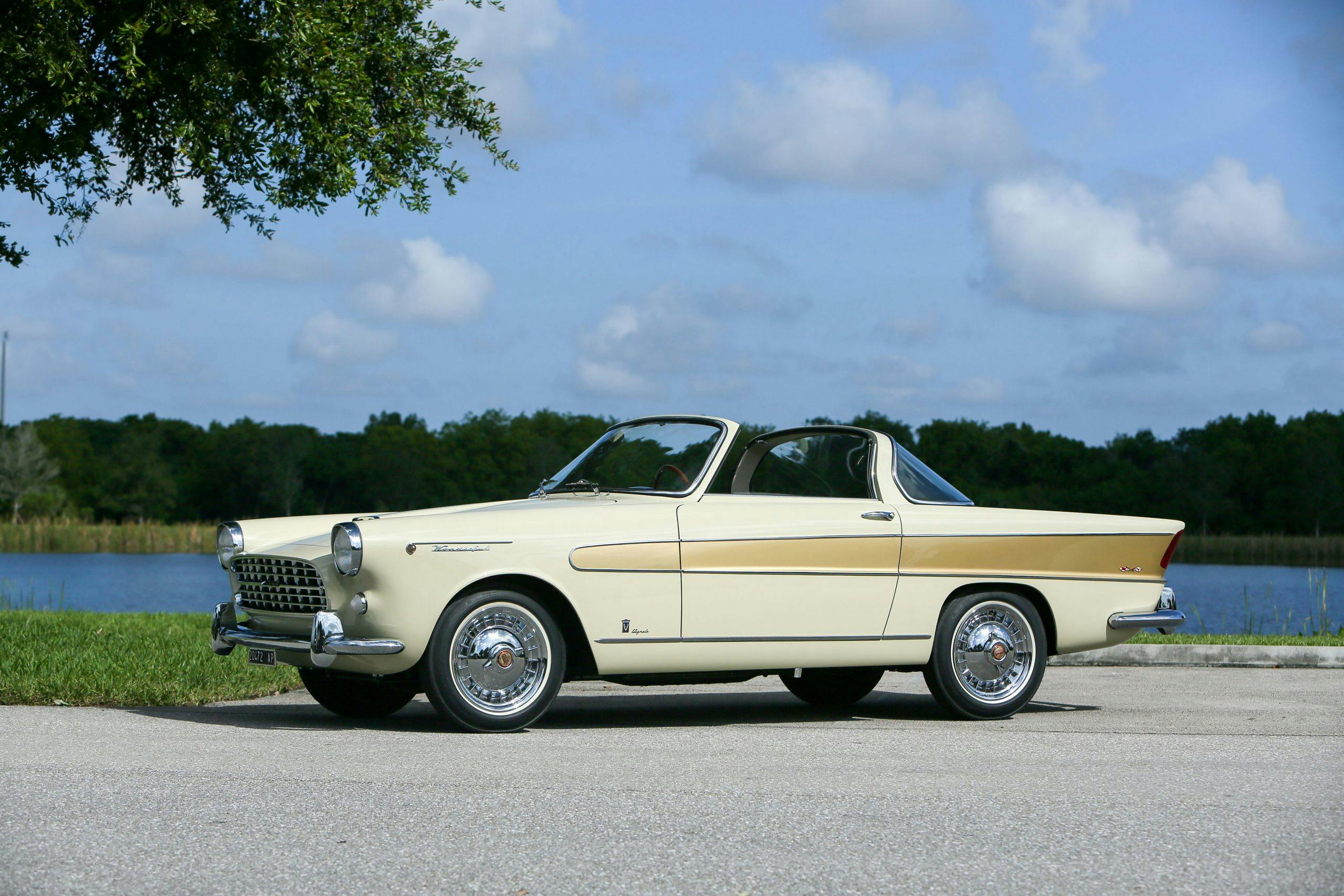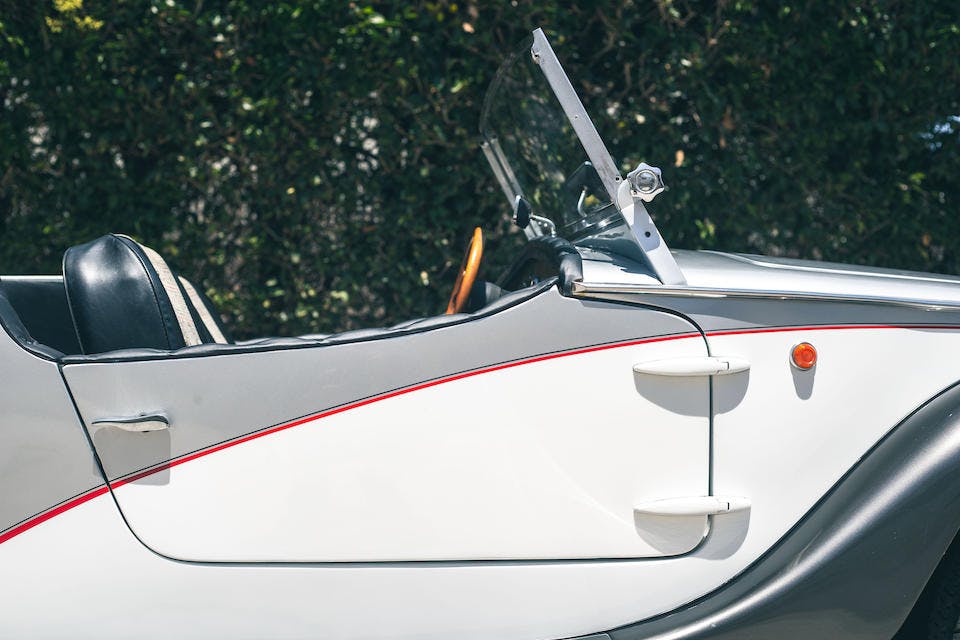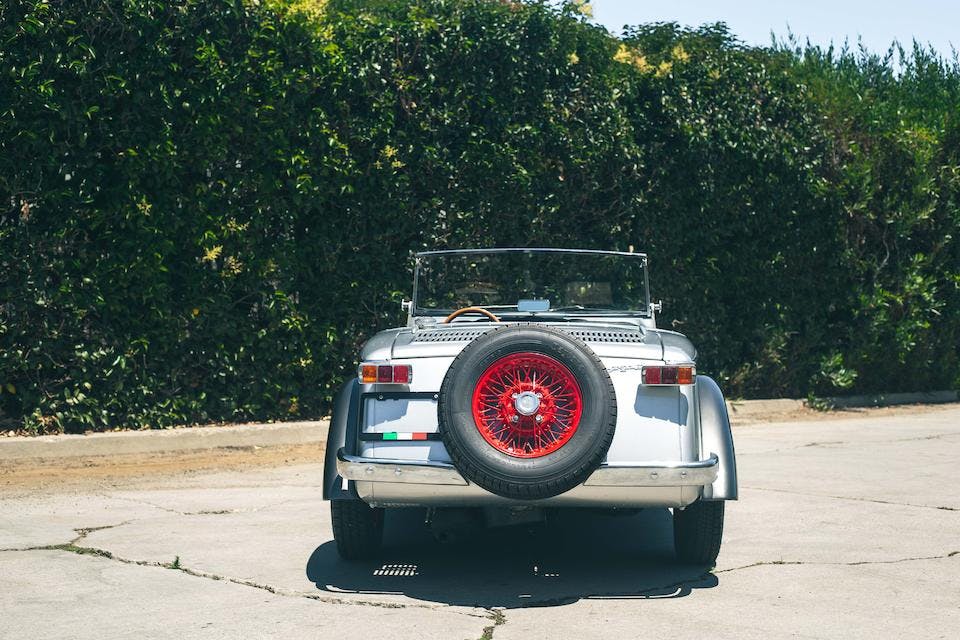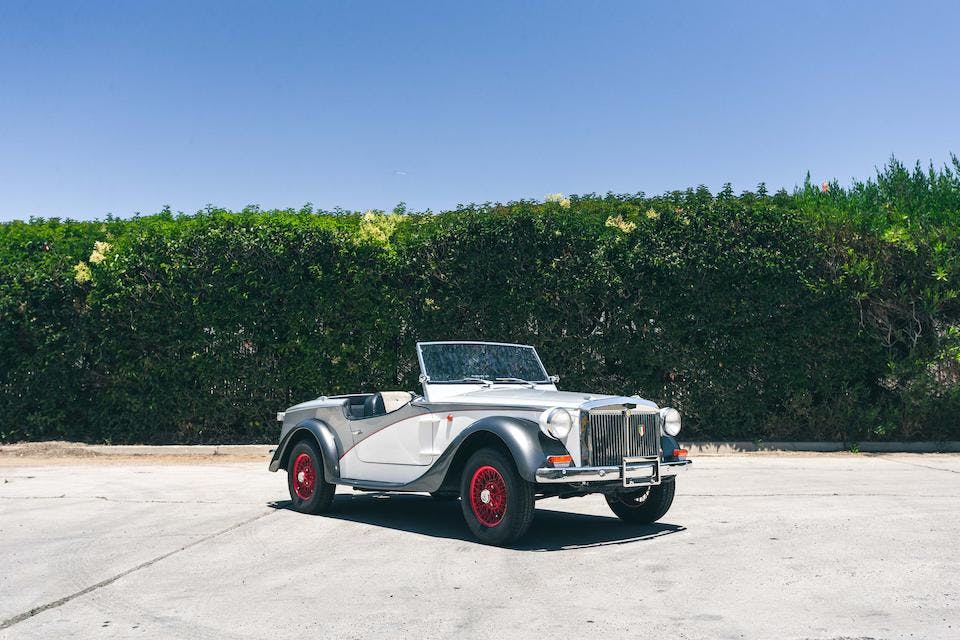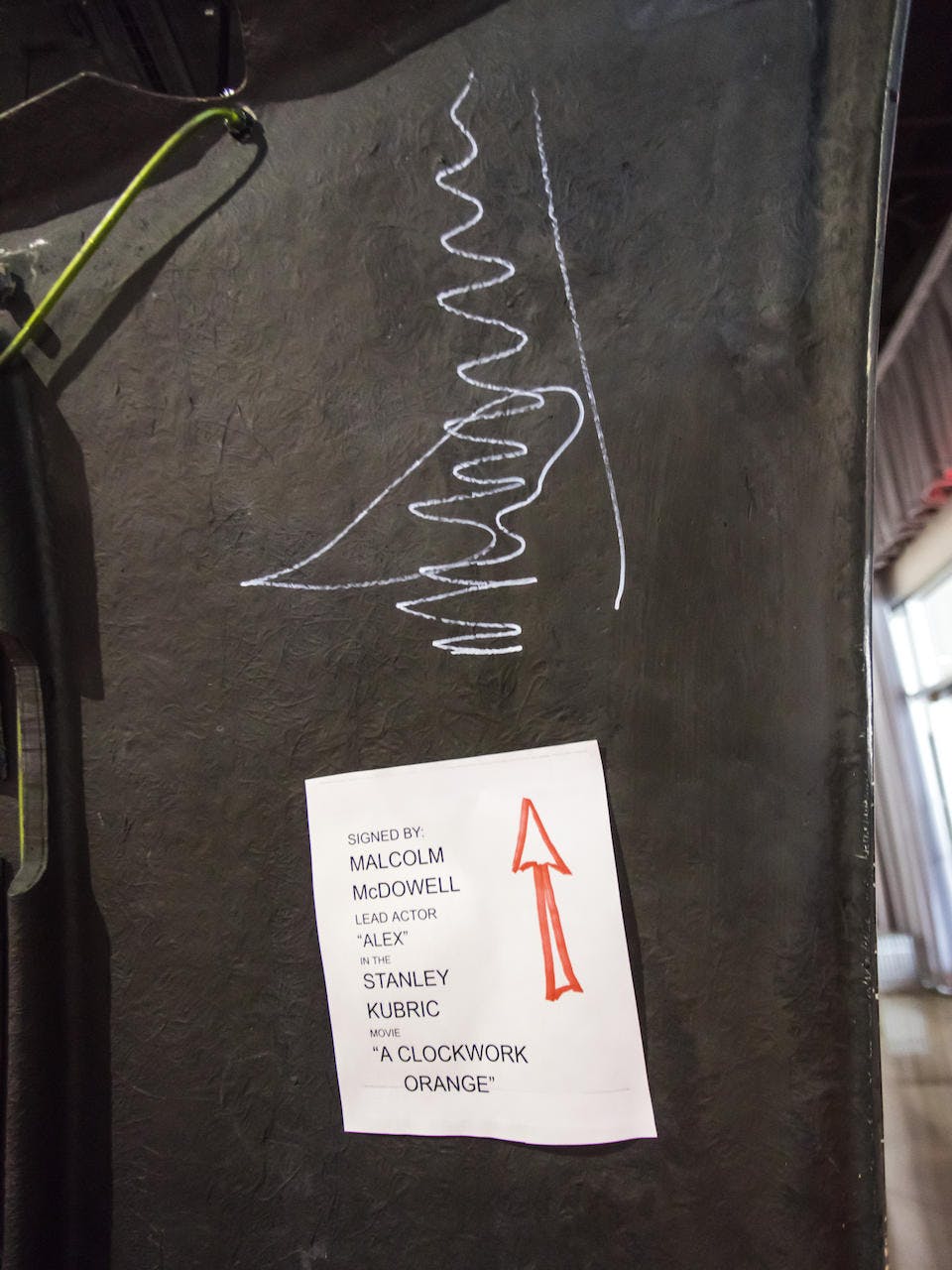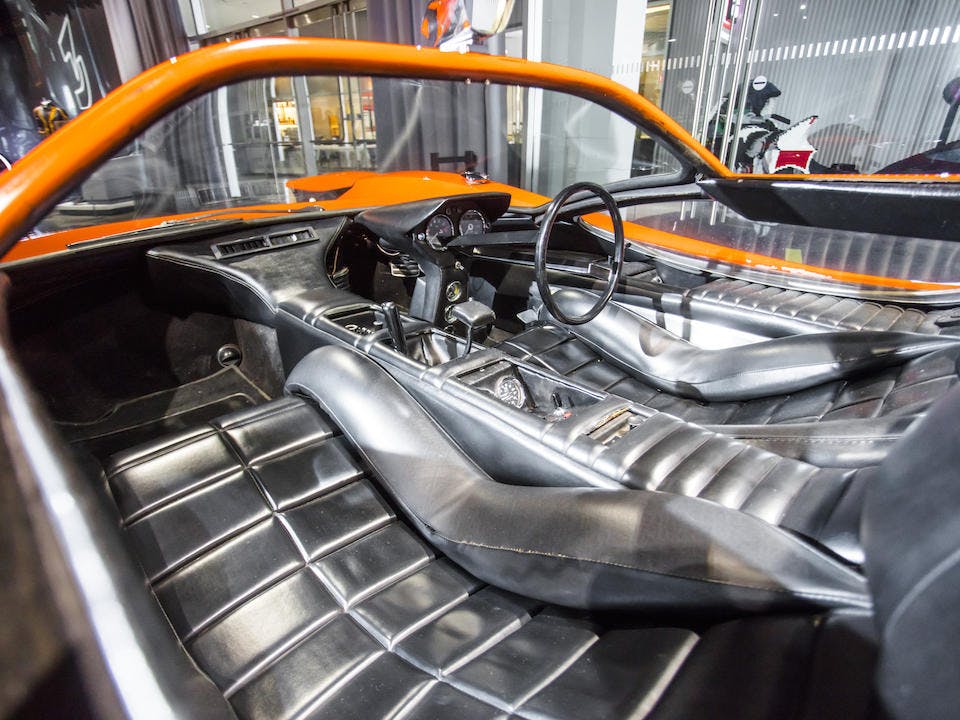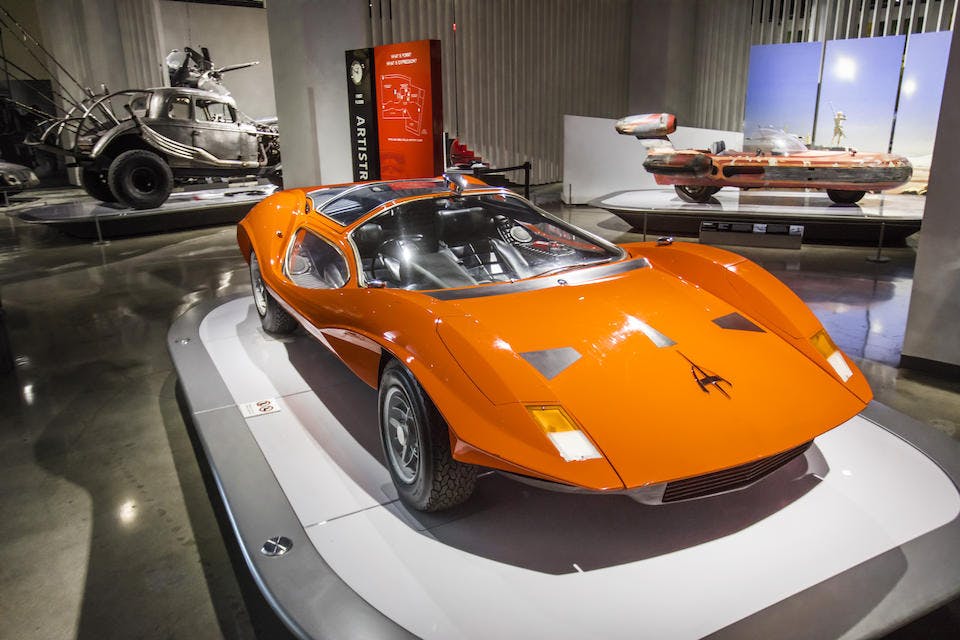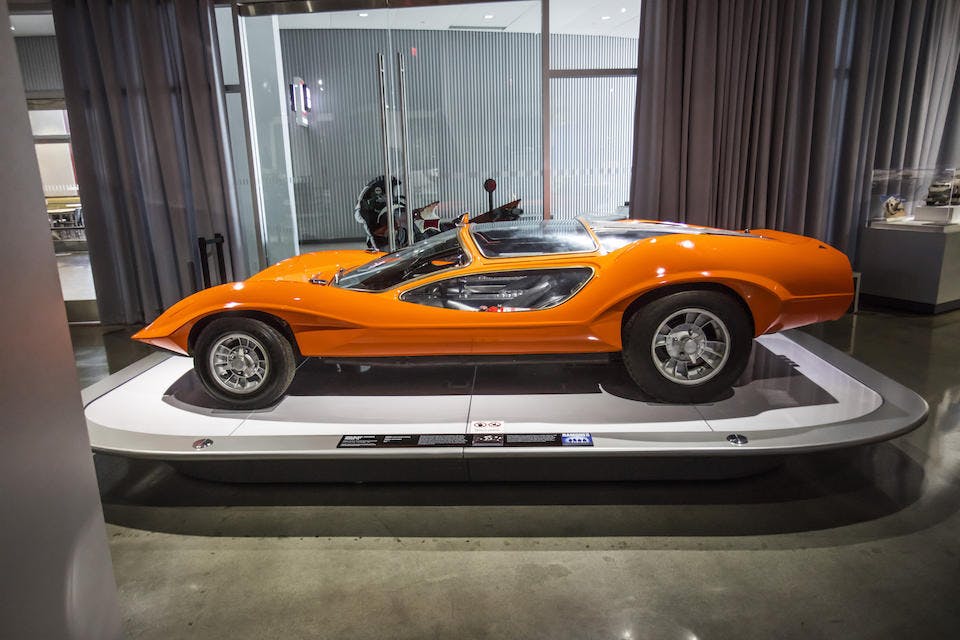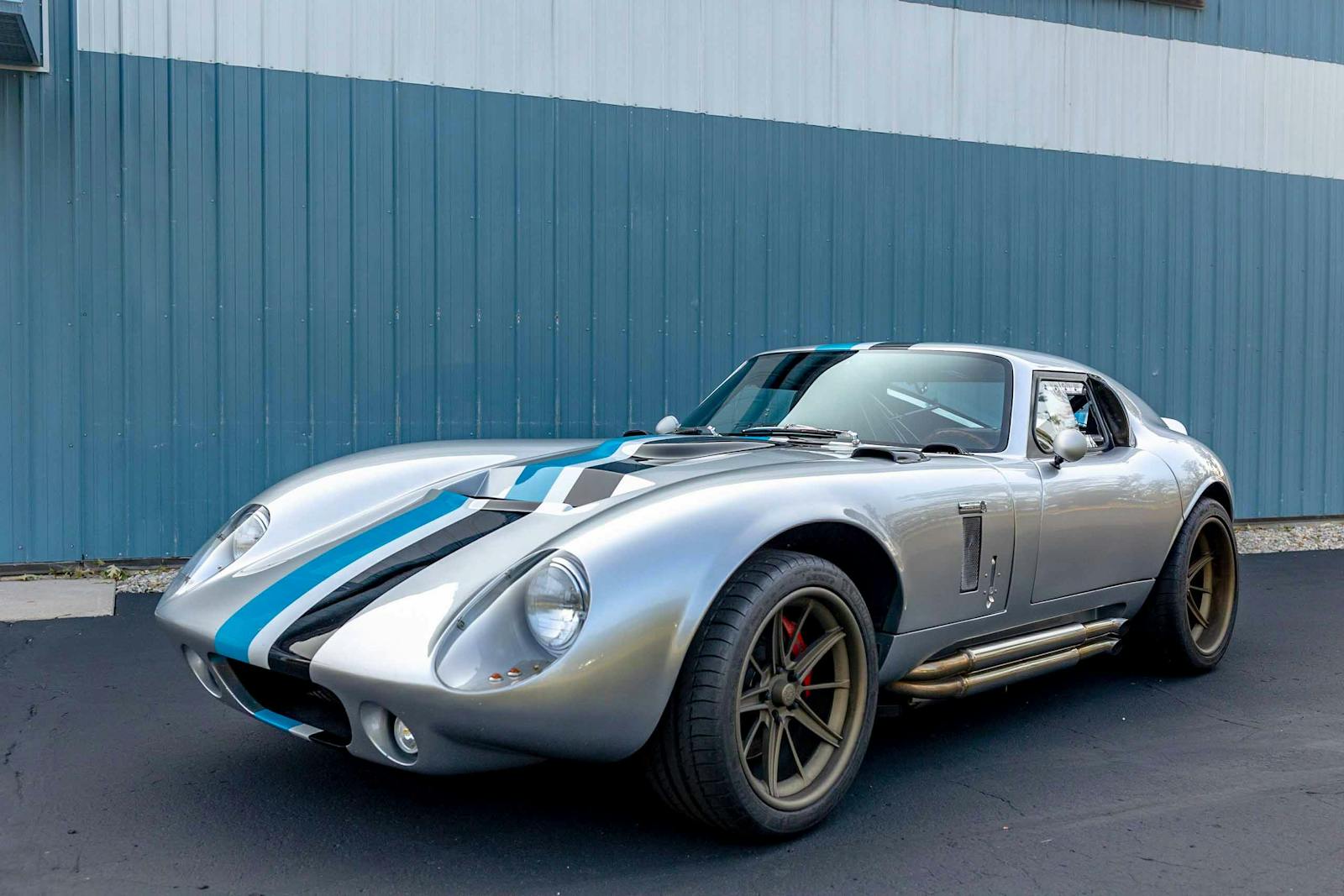The Monterey auctions may be online, but these 8 oddballs keep it weird
Although some of the Monterey auctions have been canceled outright this year, the major ones—including RM Sotheby’s, Bonhams, and Gooding & Co.—have moved online, so there are still plenty of dream cars to drool over. As always, there are also several unusual and downright weird cars on offer that appeal to the folks with more eccentric tastes.
Here are the eight strangest rides we could find that are up for grabs online this August.
2005 Ferrari 575 GTZ Zagato
Presale estimate: TBA
It wouldn’t be an oddball list without a Zagato, so here we go. The 575 GTZ came about when a Japanese collector named Yushiyuki Hayashi commissioned Zagato to build a special coachbuilt car based on the contemporary Ferrari 575 Maranello. Zagato ended up building six GTZ coupes based on the 575, complete with its signature double-bubble roof, and three convertibles based on the 550 Barchetta. Hayashi bought the first two 575 GTZs, and this is one of them. The dark blue with white roof seems like a weird choice, but it’s in the style of an original Zagato-bodied Ferrari 250 GT Tour de France from the 1950s.
2015 VLF Force 1
Presale estimate: $275,000–$325,000
Started in 2016, VLF Automotive is a joint venture between Gilbert Villarreal, Bob Lutz, and Henrik Fisker (the initials of each man’s last name comprise the VLF name). Among its products are a contract-built H1 Humvee and a sedan called the Destino, which is essentially an old Fisker Karma with a cleaner face and an LS9 V-8. VLF’s most serious car, though, was the Viper-based Force 1.
One might be tempted to call the Force 1 a Viper in a fancy suit, and that’s mostly what it is, but there’s more to the mechanical story. The Force 1 wears an all-carbon-fiber body, rides on active suspension, and churns out 745 hp (compared to “just” 640 in the standard Viper). VLF announced a production run of 50 cars priced at $268,500 each, but Gooding & Company claims that only five examples were ever completed.
2000 Mercedes-Benz E320 Pickup
Presale estimate: $65,000–$80,000
There’s nothing particularly weird about a second-gen (W210) E-Class, but if you turn one into a pickup people are going to ask questions. Mainly, “why?” The answer in this case isn’t clear, but the story starts with a standard E320 station wagon. It then went to a German coachbuilder called Binz; technically, you could call this a “Benz by Binz.”
Binz has also built ambulances, fire trucks, limos, and hearses, but this pickup conversion is a one-off. Binz stretched the car by nearly 2.5 feet, built up the bed, added rails, and stuck the original wagon’s rear window behind the back seats. The interior is stock, other than the individual buckets in the back, flanking a custom rear console. When all was said and done the build totaled to $50,000 and the pickup has racked up 21,500 miles since—presumably not on trips to Home Depot.
If this hilarious contraption looks familiar, that’s because it popped up on Bring a Trailer in late 2018 to a $20,250 no-sale, then sold for $30,800 in Scottsdale this year. The estimate this time around is a little bit more … ambitious.
1954 Edwards America Convertible
Presale estimate: TBA
The Edwards America was just one of many neat but unsuccessful American sports cars to come out of the 1950s, but it’s one of the best-looking.
Although West Coast businessman Sterling Edwards was a successful racer, he also wanted to build road cars. Drawing on Italian performance cars like the Cisitalia for inspiration, Edwards hired Norman Timbs to help design the car. Ace mechanic Phil Remington of future Shelby American fame also worked on the project.
As so often happens with upstart sports car companies, the Edwards was just too expensive. Only five were ever completed, including just two convertibles, and this one is the prototype. Under a fiberglass body and behind that humongous eggcrate grille rests an Oldsmobile Rocket V-8; the chassis is a beefed-up 100-inch Henry J frame. An obscure but important bit of U.S. sports car history, this car sold in Amelia Island 10 years ago for $110,000.
1953 Fiat 1100 Cabriolet by Allemano
Presale estimate: TBA
Carrozzeria Allemano designed bodywork for automobiles from most of the great Italian marques, including Ferrari, Alfa Romeo, Maserati, Lancia, and Cisitalia. Allemano coachwork also graced more humble Fiats and Fiat Abarths, which brings us to this little cabriolet. Sure, beauty is in the eye of the beholder; but we can comfortably say that this car wasn’t Allemano’s best.
Built on the Fiat Nuova 1100 platform and penned by Giovanni Michelotti, it was available as either a coupe or cabriolet but in very small numbers. Only a handful were completed in period and even fewer survive today. Despite their cartoonish looks, rare coachbuilt Italian cars have a following; although it remained unsold, this one got bid to $185,000 in Scottsdale three years ago.
1958 Fiat 1200 Wonderful Coupe by Vignale
Presale estimate: TBA
This car is another Michelotti design (completed while he worked at Vignale), but compared to the cabriolet above doesn’t this coupe look just … wonderful? The answer is yes. The coupe is a lovely marriage of American styling cues—like the two-tone tailfins and rakish coupe profile—with the face of a larger European gran turismo. Not only is it easy on the eyes, it also features a nifty removable roof panel even though it was built years before the 911 Targa or TR4 Surrey Top. Take that, Porsche.
1967 Siata Spring
Presale estimate: $8500–$15,000
Società Italiana Auto Trasformazione Accessori, aka SIATA, started in the 1920s selling Fiat speed parts, but in the postwar years the firm started building its own complete cars. They still borrowed heavily from the Fiat catalogue, but the Siatas of the 1950s were straight-up gorgeous with the looks of a scaled-down Ferrari barchetta. They were quick, too, and notched up wins in small-displacement sports car racing.
By the time this car debuted, however, Siata’s golden age was long past. The Spring was Siata’s last product before going bankrupt in 1970, and the car wasn’t exactly its magnum opus. The Spring borrows plenty of styling cues from older British roadsters, but those features look smushed on the tiny Fiat 850 platform. In addition, the massive grille, which looks like it’s compensating for something, is entirely pointless; the Fiat 850 is a rear-engine car. Siata built about 3500 Springs before going bust, although a company called ORSA bought the rights and built Springs for another five years.
If you like delightfully weird cars, the Siata Spring should be on your radar. This one, offered by Bonhams, has to be one of the nicer ones in the country. It boasts recent paint and restored interior as well as a very clean engine bay, and it rides on Borrani wire wheels.
1969 M-505 Adams Brothers Probe 16
Presale estimate: $150,000–$250,000
The Probe 16 was a highlight of the 1969 London Motor Show, where it won “Best Styling Exercise,” and it was also featured in The Daily Telegraph. The big-fendered contraption was also featured on a 2004 episode of Top Gear. Most people know the Probe 16, however, as the “Durango 95”—the swoopy, futuristic sports car featured in Stanley Kubrick’s A Clockwork Orange (1971).
Brothers Dennis and Peter Adams worked for Marcos before striking out on their own, so they were already familiar with unconventional cars. The Probe 16 was an “investigation into the extremes of styling,” as they put it, with a heavy emphasis on low height. Mission accomplished—the Probe is just 34 inches tall!
Part of the reason the Probe 16 sits so low is its lack of doors. You enter through the sliding glass roof and nestle into a cockpit that’s almost as extreme as the outside of the car, with ridiculously deep-set seats and a strange pod of gauges that runs from the steering column down between your legs. How they fit four people into this car during A Clockwork Orange is a feat of movie-making magic.
Mechanically, the car is more conventional, with a tuned 1.8-liter Austin B-Series engine mounted transversely behind the driver and coupled to a four-speed manual.
Adams made just three Probe 16s. One sold to an American songwriter but caught fire, so only two are thought to exist today. This one is the London Motor Show car, and although nobody is confirming with 100 percent certainty that this is the car from Clockwork, Bonhams claims “it is most likely that the car we are offering here, AB/3, was indeed the one used in the movie.” More recently, s/n AB/3 has been featured in the “Hollywood Dream Machines—Vehicles of Science Fiction and Fantasy” exhibit at the Petersen Museum in Los Angeles.
Like this article? Check out Hagerty Insider, our e-magazine devoted to tracking trends in the collector car market.
